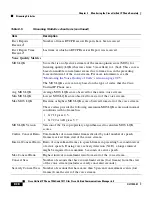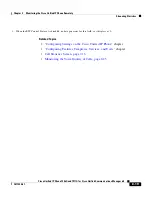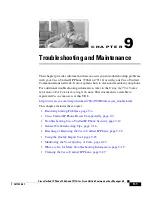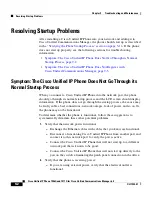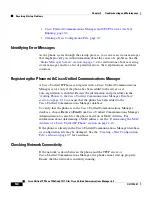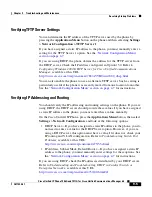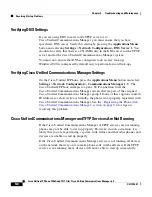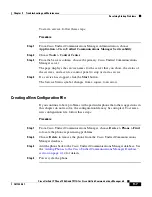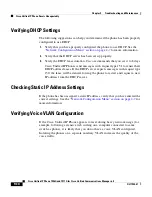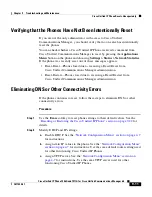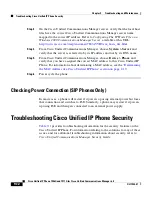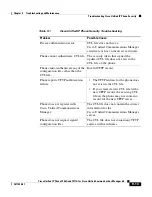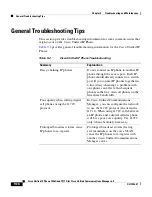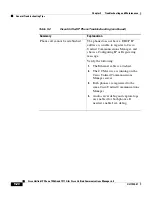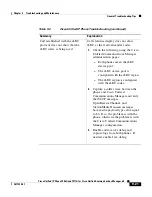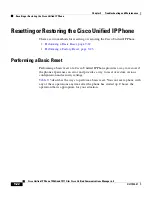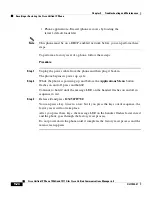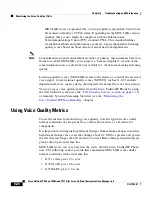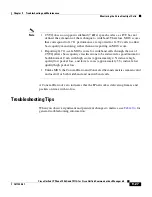
Chapter 9 Troubleshooting and Maintenance
Troubleshooting Cisco Unified IP Phone Security
9-12
Cisco Unified IP Phone 7906G and 7911G for Cisco Unified Communications Manager 6.0
OL11954-01
Step 3
On the Cisco Unified Communications Manager server, verify that the local host
files have the correct Cisco Unified Communications Manager server name
mapped to the correct IP address. Refer to
Configuring The IP Hosts File on a
Windows 2000 Communications Manager Server
, available at this URL:
http://www.cisco.com/warp/customer/788/AVVID/cm_hosts_file.html
Step 4
From Cisco Unified Communications Manager, choose
System > Server
and
verify that the server is referred to by its IP address and not by its DNS name.
Step 5
From Cisco Unified Communications Manager, choose
Device > Phone
and
verify that you have assigned the correct MAC address to this Cisco Unified IP
Phone. For information about determining a MAC address, see the
“Determining
the MAC Address of a Cisco Unified IP Phone” section on page 2-19
.
Step 6
Power cycle the phone.
Checking Power Connection (SIP Phones Only)
In most cases, a phone will restart if it powers up using external power but loses
that connection and switches to PoE. Similarly, a phone may restart if it powers
up using PoE and then gets connected to an external power supply.
Troubleshooting Cisco Unified IP Phone Security
Table 9-1
provides troubleshooting information for the security features on the
Cisco Unified IP Phone. For information relating to the solutions for any of these
issues, and for additional troubleshooting information about security, refer to
Cisco Unified Communications Manager Security Guide
.
Summary of Contents for 7906G - Unified IP Phone VoIP
Page 4: ......

